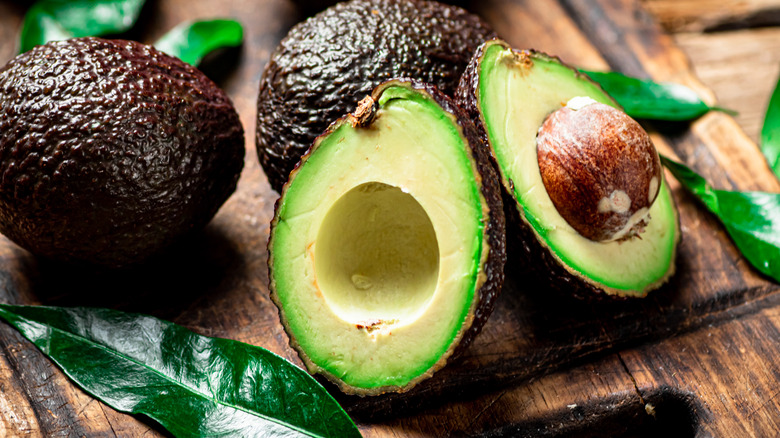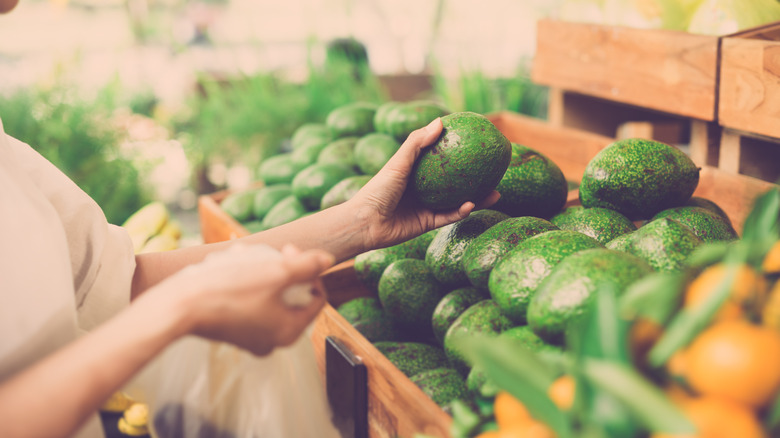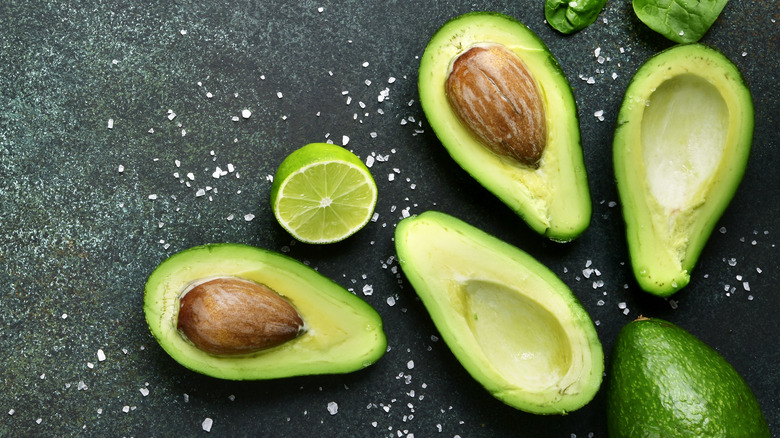How To Know If Avocados Have Gone Bad
Avocados are a top superfood. They're great for improving digestion, heart health, and even preventing eye damage (via Medical News Today). According to Healthline, this fruit is notably rich in potassium, monounsaturated fat, and fiber. So, when combined with other vitamin-rich foods like garlic, onions, and lime juice, guacamole just might save your life — well, almost.
Given their proven health benefits, the demand for avocados continues to rise in the United States, as Grand View Research reported. There's the Millenial-led avocado toast trend, avocado oil — an ingredient Bon Appétit recommends for both sugary and salty favorites — and soothing avocado face masks for hydrated skin. If you're buying boatloads of avocados for all your dietary and skincare needs, it's important to keep track of which ones have gone bad and which are ready for mixing and mashing into your family's favorite avocado treat. Prices are at an all-time low, after all (via Food & Wine).
Feel for softness
When it comes to avocados, a little bit of browning isn't necessarily a bad thing. In fact, some varieties — like Hass avocados — will turn darker on the outside as they ripen (via My Foodbook). Look for deep green, nearly purplish skin to determine if your fruit is ready. Still feeling stuck at the grocery store? The superfood's softness is also an indicator of ripeness and, in some cases, spoilage. Press gently on the skin, and if you feel a little bit of give, the fruit is guacamole-ready. However, if pressing on the flesh results in a deep indentation, it's likely bad, as Healthline reported.
Once you cut open the avocado, look for discoloration. According to University of Querétaro professor Elhadi M. Yahia, a few brown spots aren't as bad as people might think they are. "I have absolutely no problem eating them," she told Eat or Toss. These spots might not taste as fresh and creamy as greener sections, but you can always scoop them out. Though beware: if the entirety of the avocado's flesh appears brown or you start to notice streaks of black, throw it out. Eating rotten fruit can lead to symptoms of food poisoning like vomiting, diarrhea, and stomach pain, per Healthline.
Another indicator of spoilage is texture. Though "stringy" flesh is often produced by newly-planted trees, according to California Avocados, it can also mean that your fruit has expired.
Keep your avocados fresh with citrus
When exposed to oxygen, avocados begin to brown or oxidize. As University of Querétaro professor Elhadi M. Yahia explains to Eat or Toss, keeping avocados in cold environments before they're ripe — a refrigerator, for instance — can also result in something called "vascular browning," or little dark streaks in the flesh. Always let your fruit ripen on the counter before transporting it to the fridge.
To delay the oxidation process, California Avocados recommends sprinkling citrus — lemon or lime juice, to be exact — onto the cut fruit. Alternatively, as advised by Avocados from Mexico, tightly wrap a cut-in-half avocado in saran wrap to shield it from the air. No plastic wrap? Simply store the half (without the pit, of course) in a Tupperware facing down. And don't forget, there are reasons why you shouldn't throw the pit away.
Keep in mind: avocados have undisputed health benefits, but there's also a dark side to the industry. As noted by Food Empowerment Project, the demand for this superfood has had a negative environmental and human rights impact, leading to deforestation and unjust working conditions. Next time you shop for avocados, look for Fair Trade Certified fruits or check out your local farmer's market.


